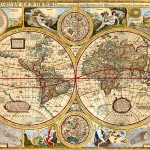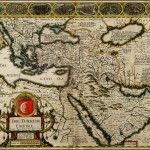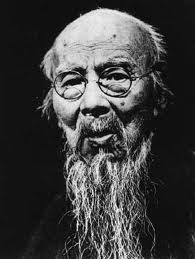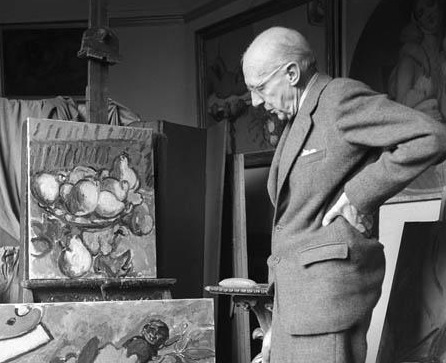John Speed (1552-1629) was one of the most famous British mapmakers of the seventeenth century, and indeed perhaps the most popular of all with map collectors around the world. Historically he is noted for placing England into the mainstream of map publishing which had been dominated by the Dutch since the late sixteenth century. Speed began by issuing maps of Great Britain as early as 1611 in his famous Theatre of the Empire of Great Britaine, that contained maps of the entire British Isles, their kingdoms, and the counties of those kingdoms.
Beginning in 1627, this was then accompanied by A Prospect of the Most Famous Parts of the World with maps of the world, its regions and its countries. Although Speed used many Dutch geographers and engravers such as Jodocus Hondius and Abraham Goos in his works, and he did copy many Dutch maps, his work is important in establishing a thereafter thriving British cartographic industry.
British County maps
Speed is best known for his important Theatre of the Empire of Great Britaine, which has been called the supreme achievement in British map-making. Speed spent over 15 years assembling the information for this atlas, which was first issued in 1611 by John Sudbury and George Humble. It is one of the most influential atlases of the British Isles ever published. The atlas contains maps of the entire British Isles, the individual nations, and separate maps for the counties.
These maps were primarily based on the work of Christopher Saxton and John Norden, but Speed updated information where possible and he added new cartographic features such as town plans and indications of the hundreds, making his maps the most detailed and up-to-date of their time. Not only are the maps historically fascinating, but Speed also improved the decorative features of the maps, which were all finely engraved by Jodocus Hondius.
Speed’s maps are some of the most appealing cartographic images ever produced. He included intricate calligraphy, coats-of-arms, town plans, small profiles of important buildings, vignettes of battles, fancy compass roses, figures of local inhabitants, cherubs, and many other attractive features. Speed’s British maps were immediately popular and remained so well into the eighteenth century, with this atlas going through many editions.
In 1627, just two years before his death, Speed added a supplement to his British Theatre containing maps of the rest of the world. This section, entitled A Prospect of the Most Famous Parts of the World, included maps of the entire world, the continents and of many individual countries. These maps continued with the highly decorative nature of Speed’s work, many having panels of figures along the sides, city plans, elaborate cartouches and other beautiful features. The combined parts made this the first world atlas produced by an Englishman.








![The Televisor. Successful Baird Demonstration [Video]](https://gaukantiques.com/wp-content/uploads/2013/03/john-logie-baird.jpg)






